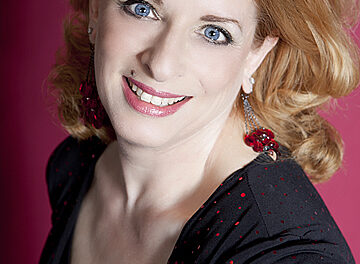Pan Harmonia, long respected in our region for sponsoring performances by gifted young artists, began its 14th season with this piano recital by Maria Parrini. Only 16 years old, Maria performed a program that would have challenged graduate-level students and accomplished it with a professionalism and musicality well beyond her years. Three complete piano sonatas, one each by Ludwig van Beethoven, Carl Vine, and Robert Schumann, so different in style, form, and technical demands, were given sensitive and carefully-nuanced performances that evidenced her careful training and seemingly natural musical intelligence.
The daughter of Greenville SC, pianists Sherry and Fabio Parrini (with whom she has studied since the age of three), Maria has already garnered an impressive list of accolades. She placed first in the Jan and Beattie Wood Concerto Competition, the Carolina Youth Symphony Concerto Competition, and the Limestone College Young Artist Competition. She has attended the Brevard Music Center where she performed with the BMC Orchestra. She has also performed with the Clemson University Symphony Orchestra, the Carolina Youth Symphony Orchestra, and the Greenville County Young Artist Orchestra. She has performed in masterclasses with Russell Sherman, Sergei Babayan, and Christopher O’Riley. If this weren’t enough, she also plays the cello and participates in the Greenville Fine Arts Center’s chamber music program on both cello and piano.
Opening her program was the Beethoven Sonata in A, Op. 2, No. 2. Dedicated to Haydn, the first movement is a sunny homage to the elder master with its cheerful disposition and explosion of motives derived from the tonic arpeggio. Parrini executed nimbly all motivic exchanges and, well into the development section, the intensified contrapuntal writing. A very brief memory slip occurred early in the movement, but a quick recovery rendered this hardly noticeable. The second movement, Largo appassionato, showcased one of her real strengths — the ability to control the tempo so each moment is adequately savored. The result was a movement sharply characterized by the pizzicato bass supporting a gorgeous cantabile melodic line, its singing quality the more remarkable for the general lack of resonance of the small grand piano in the Altamont Theatre. The final two movements, Scherzo: Allegretto and Rondo: Grazioso, were likewise interpreted with grace and with a rendering of the developmental section of the rondo not unlike that of spontaneous improvisation. This was to be one of the high points of her performance.
Next came Carl Vine‘s Sonata No. 1 of 1990. Vine (b.1954) is an acclaimed Australian composer of music for dance, theater, film, and television, and occasional music, too, such as for the Olympics closing ceremony in Atlanta of 1996. His Sonata No. 1 reflects the influence of Elliot Carter’s Piano Sonata of 1946 with its cyclical writing, structure in only two movements, and reliance on tempo changes for further formal articulation. Parrini has an easy manner in addressing her audience; she relayed an anecdote about hearing someone else perform the piece and said that playing this sonata was like “talking to aliens.” The first movement’s quartal harmony in parallel motion is the background for a surprisingly accessible melody which was strung out like so many pearls. Sections sounded like disjointed bits of a toccata played on a synthesizer, an astounding sound effect on an acoustic piano. The second movement, Leggiero e legato, featured a scurrying, recurring section in moto perpetuo, not unlike ants in an ant farm, with hands in distant registers of the instrument. This was impressive not only for its execution, but the necessary memory work.
The program concluded after intermission with Schumann’s Piano Sonata in G Minor, No. 2, Op. 22 (begun in 1831 and completed in1838). The considerable physical and mental demands of the preceding two works did little to diminish Parrini’s fine performance of this work, too. The first movement is heavily declamatory and dramatic, with lyrical passages sounding like song interludes in the dramatic narrative. Parrini played this with a heightened urgency, ending the movement with heart-pounding momentum. The second movement, inspired by Schumann’s own song “Im Herbst,” she approached (as she said) like one in love with heart pounding (from the previous movement), though here again each note was given its moment and nothing was rushed. The last movement was remarkable for the energy she summoned to play as the composer had intended, Prestissimo, then “Immer Schneller und schneller” (“Always faster and faster”).
This exceptional young woman hopes to enter a music conservatory for her training and then open a music academy for underprivileged children. How fortunate her future students will be. She is well on her way. Brava!
Parrini’s work may be seen and heard on YouTube here and here.
Pan Harmonia’s offerings continue throughout the season. For details, see our calendar.











